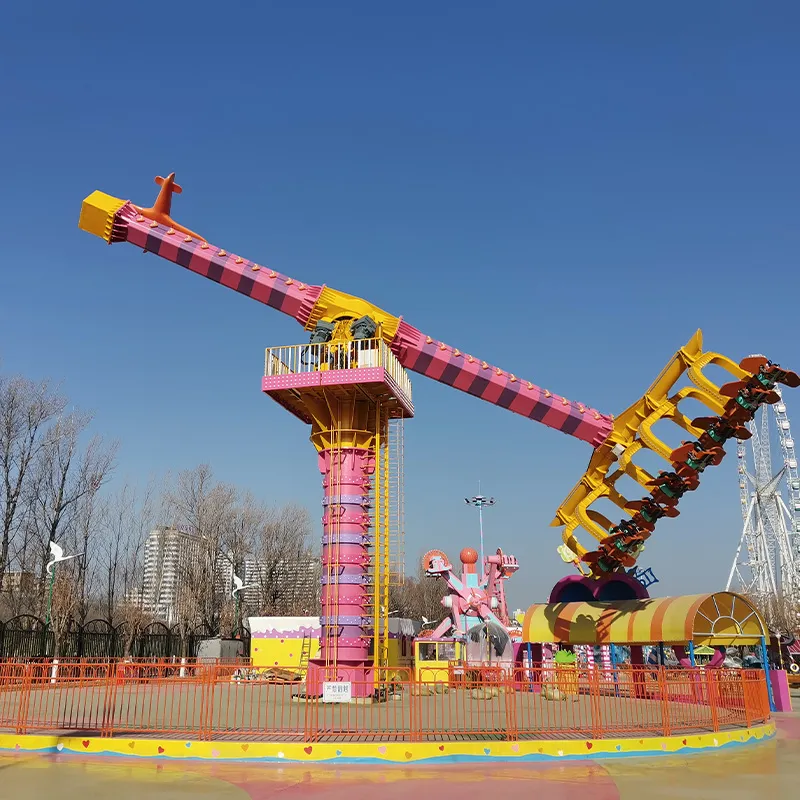- Albanian
- Arabic
- Belarusian
- Bengali
- Czech
- English
- French
- German
- Hebrew
- Hungarian
- Indonesian
- irish
- Italian
- Japanese
- kazakh
- Persian
- Russian
- Thai
- Uzbek
- Vietnamese
rollercoaster design
The Thrilling World of Roller Coaster Design
Roller coasters have long been a source of excitement and adrenaline for thrill-seekers around the globe. These mechanical marvels twist and turn, defy gravity, and elicit joyous screams from riders. But behind the exhilarating experience lies the intricate art and science of roller coaster design—a field that combines engineering, physics, and creativity to craft the ultimate ride.
The Engineering Foundations
At the heart of roller coaster design is rigorous engineering. Designers must consider a multitude of factors, including safety, structural integrity, and rider comfort. The design process typically begins with conceptual sketches, where innovative ideas are born. Once a concept is chosen, sophisticated computer-aided design (CAD) software is employed to create detailed blueprints. These blueprints outline every aspect of the coaster, including heights, angles, and the trajectory of each loop and drop.
Material selection is also crucial. Roller coasters can be constructed from steel or wood, each presenting unique characteristics. Steel coasters, known for their smooth rides and ability to perform complex inversions, offer flexibility in design. In contrast, wooden coasters provide a classic feel, often characterized by their rougher ride experience and nostalgia.
The Physics of Thrills
Designers must have a firm grasp of physics to ensure a safe and thrilling experience. Understanding dynamics—specifically Newton's laws of motion—is essential when creating the thrilling drops and sharp turns that define a roller coaster ride. Key elements such as G-forces, inertia, and centripetal force come into play during the design process. For example, at the apex of a drop, the thrill comes from the sensation of weightlessness, a result of the gravity pull on the riders.
The successful interaction of these forces creates the roller coaster's kinetic energy, which allows it to traverse the track. Designers must calculate the perfect heights and speeds to balance exhilaration without exceeding safe G-force limits. Too much force can lead to discomfort or even injury, so precise calculations are non-negotiable.
rollercoaster design

Designing for Experience
Beyond safety and physics, roller coaster design is an art form that focuses on creating memorable experiences. Designers often employ storytelling techniques, weaving narratives into their coaster designs. For instance, themed coasters might simulate a journey through a haunted house or a high-speed chase through a cityscape. The arrangement of elements, such as sudden drops or unexpected turns, is orchestrated to maximize enjoyment, keeping riders on the edge of their seats.
Incorporating sensory elements is another way designers enhance the experience. This includes carefully placed sound effects, onboard music, and immersive theming that transport riders into another world. The design of the queue area also plays a significant role; it builds anticipation and excitement long before riders board the coaster.
Innovations and Trends
As technology advances, the realm of roller coaster design continues to evolve. Innovations such as virtual reality (VR) experiences and the use of magnetic propulsion have revolutionized how riders experience coasters. VR can immerse riders in a digital world, transforming an ordinary ride into an extraordinary adventure where they battle dragons or fly through outer space. Likewise, linear synchronous motors (LSMs) offer smooth, rapid acceleration without the need for traditional lift hills.
Sustainability has also become a hot topic among designers. Eco-friendly materials and energy-efficient systems are increasingly prioritized, with some parks even incorporating solar panels and energy recovery systems to reduce their environmental footprint.
Conclusion
The world of roller coaster design is a breathtaking intersection of art, science, and engineering. Designers blend a meticulous understanding of physics with creative storytelling to craft thrilling experiences that resonate with riders of all ages. As technology continues to advance, the future promises even more innovative and exhilarating rides, keeping the spirit of adventure alive for generations to come. Whether it’s the rush of wind in your hair or the exhilarating plunge from a towering peak, roller coasters will always hold a special place in the hearts of thrill-seekers around the world.
-
Flume Ride-Hebei Zhipao Amusement Equipment Manufacturing Co., Ltd.|Thrilling Water Attraction&Customizable DesignJul.30,2025
-
Flume Ride - Hebei Zhipao Amusement Equipment | Water Coaster, Thrilling DescentJul.30,2025
-
Flume Ride - Hebei Zhipao | Thrilling Water AttractionJul.30,2025
-
Flume Ride: Thrilling Water Attraction by Hebei Zhipao|Log Flume Manufacturers&Flume Ride DesignJul.30,2025
-
Flume Ride-Hebei Zhipao Amusement Equipment Manufacturing Co., Ltd.|Thrilling Water Coaster, Safe DesignJul.30,2025
-
Flume Ride-Hebei Zhipao Amusement Equipment Manufacturing Co., Ltd.|Thrilling Water Attraction, Safe DesignJul.30,2025
